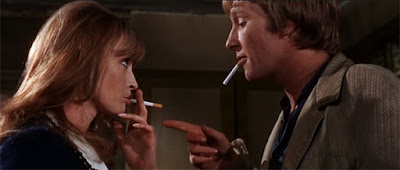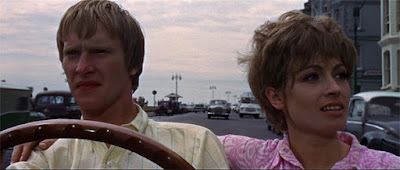And a warning-there are spoilers ahead!
1. Breakfast at Tiffany's (1961)
Everything about this scene is perfect, and it makes me cry every time (especially when she finds cat)! I think Breakfast at Tiffany's must be one of the only films to have a perfect opening and ending.
2. The Good, The Bad, and The Ugly (1966)
This video clip includes the entire final duel, which in itself is fantastic, but the part I'm talking about begins at about 13.06- Blondie (Clint Eastwood) riding across the plains as the iconic theme starts to play. I just think it's epic, and so encapsulates all that is good about a western.
3. The Ghost and Mrs Muir (1947)
Unfortunately I couldn't find a clip for this ending, but it's when Lucy Muir dies and Captain Gregg comes back for her, when he says, "And now you'll never be tired again", I just think it's beautiful how they walk out of the house together and how they are reunited.
4. Doctor Zhivago (1965)
I was unable to find a clip of this one either! It's when Yevgraf (Alec Guinness) learns that Tanya (Rita Tushingham) can play the balalaika, he tells her 'it is a gift', and it is then he knows for certain that she is Zhivago's daughter. It's a very poignant scene, particularly as 'Lara's Theme' begins to play as he watches them walk away.
5. The Sound of Music (1965)
I remember when I used to watch this film as a child I was always so sad when I reached this scene because I didn't want the film to be over! I still feel the same way today. As with every scene in this film it's beautifully shot, for the audience there is the relief and hope that the family will be safe, but there is also a tinge of sadness because we do not know what lies ahead of them.
6. Shane (1953)
This will probably be the most controversial scene on my list, since I know Joey (Brandon DeWilde) annoys many people! But I think this scene is lovely. It's such an iconic scene because the audience is as sad as Joey that Shane's leaving, and there are so many ambiguities-is Shane really alright? Joey is losing his hero but Shane too has lost the ability to have a normal life without violence. Cleverly it both strengthens and collapses the mythos of the west.
7. Splendor in the Grass (1961)
This scene is so sad, but so wonderfully acted, I think it's impossible to watch this film and not ask- 'Where was Natalie Wood's Oscar?' In this scene in particular there is so much left unspoken, but it is conveyed through the way Deanie looks at Bud and her silence in the car. Elia Kazan the director once said this was his favourite part of the film.









































